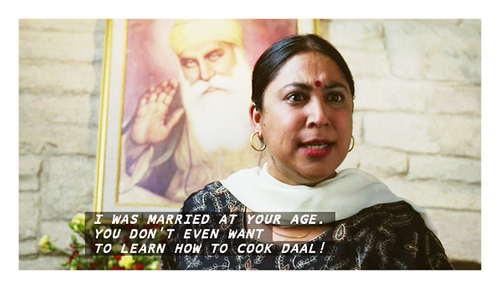When kicking back to Bend it Like Beckham, it became apparent that more was on the agenda for today’s tutorial then casually playing out the end of session. We were looking at the concept of diaspora represented in film.
Diaspora is the result of worldwide migration and consists of fragmented transnational communities that are located in multiple countries around the globe. Such movements of people have lead to increased diversity, rising multicultural societies and have made cross-cultural interaction inevitable (Chacko 2010). Members of the diaspora remain connected though culture, ethnicity, religion or language.
In the media, diasporic communities are often misrepresented or unheard of due to lack of involvement in content production (Georgiou 2003). However, we are beginning to see popular culture incorporating disasporic communities into television and film around the globe, benefiting both minority and majority groups.
The film Bend it Like Beckham engages with the South Asian diaspora in Britain. The protagonist of the film Jessminda, or Jess, is the youngest daughter of an Indian family living in Britain. She has a love, talent and drive for playing footbal, with high hopes of making a career out of it, which appalls her family as she rebels against their traditional cultural values.
 Throughout the film, Jess is living the life and struggles of any regular teenage girl in Britain, dealing with issues like dating and escaping parental control. Additionally, preconceived assumptions and expectations about Jess’ culture become evident, as the audience begins to see the baggage that comes along with being part of a minority group within Britain. Representing the diasporic community in the film helps to explore both the light and dark sides of diaspora (Chacko 2010).
Throughout the film, Jess is living the life and struggles of any regular teenage girl in Britain, dealing with issues like dating and escaping parental control. Additionally, preconceived assumptions and expectations about Jess’ culture become evident, as the audience begins to see the baggage that comes along with being part of a minority group within Britain. Representing the diasporic community in the film helps to explore both the light and dark sides of diaspora (Chacko 2010).
This inclusion of the Indian diaspora is beneficial to the multicultural society in Britain. On one hand, it creates a sense of belonging for hybrid communities, including them in discussion within the public sphere. On the other hand, it provides majority groups with an insight into the ethnic minorities within the country, with the intent on breaking down existing stereotypes and barriers for engagement.
References:
Chacko, M 2010, ‘Bend it Like Beckham: Dribbling the Self Through a Cross-Cultural Space’, Multicultural Perspectives, vol.12, no.2, pp.81-86.
Georgiou, M 2003, ‘Mapping Diasporic Media across the EU: Addressing Cultural Exclusion’, Key Deliverable: The European Media and Technology in Everyday Life Network, 2000-2003, viewed 20 May 2014.












